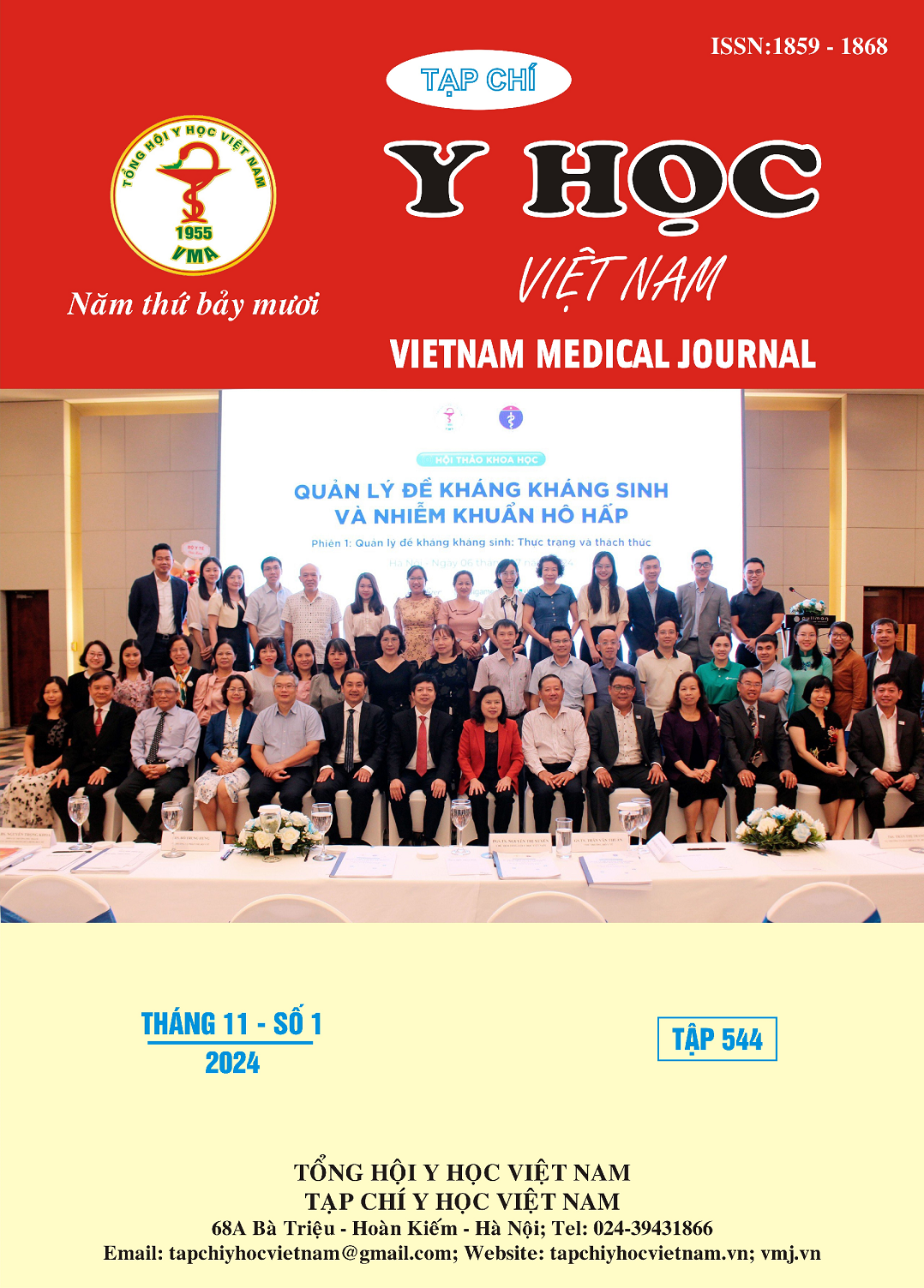ĐẶC ĐIỂM LÂM SÀNG, CẬN LÂM SÀNG VÀ BIỂU LỘ PD-L1 Ở BỆNH NHÂN UNG THƯ PHỔI TẾ BÀO NHỎ TẠI BỆNH VIỆN QUÂN Y 103
Nội dung chính của bài viết
Tóm tắt
Mục tiêu: Mô tả đặc điểm lâm sàng, cận lâm sàng và biểu lộ mPD-L1 ở bệnh nhân ung thư phổi tế bào nhỏ tại Bệnh viện Quân y 103. Đối tượng và phương pháp: Nghiên cứu tiến cứu, mô tả cắt ngang trên 30 bệnh nhân ung thư phổi tế bào nhỏ được chẩn đoán xác định bằng kỹ thuật hóa mô miễn dịch, điều trị nội trú tại Trung tâm hô hấp, Bệnh viện Quân y 103 từ tháng 01/2022 đến 10/2024. Bệnh nhân được khám lâm sàng, xét nghiệm cận lâm sàng và biểu lộ mPD-L1 trên mẫu mô. Kết quả: Bệnh nhân có độ tuổi trung bình cao (69,61 ± 7,17 tuổi), hay gặp nhất độ tuổi 61 - 70 (53,33%). 100% bệnh nhân là nam giới, 93,33% bệnh nhân hút thuốc lá. Triệu chứng cơ năng gặp nhiều nhất là ho (86,67%), tiếp đến là đau ngực (53,33%), khạc đờm (46,67%), khó thở (36,67%) và ho máu (23,23%). Tỷ lệ tràn dịch màng phổi khá cao (26,67%). Khối u thường thùy trên 2 bên (60%), vị trí trung tâm (96,67%) và kích thước lớn hơn 3 cm (86,67%), bờ nham nhở (100%), phá hủy (30%). 83,33% bệnh nhân ở giai đoạn lan rộng. 100% bệnh nhân cho kết quả mPD-L1 âm tính. Kết luận: Bệnh nhân ung thư phổi tế bào nhỏ thường là nam giới, tuổi cao, tiền sử hút thuốc lá, triệu chứng lâm sàng đa dạng, khối u thùy trên, trung tâm kích thước lớn, giai đoạn bệnh muộn và biểu lộ mPD-L1 âm tính.
Chi tiết bài viết
Từ khóa
Ung thư phổi tế bào nhỏ; Biểu lộ mPD-L1.
Tài liệu tham khảo
2. Schultheis A.M., Scheel A.H., Ozretić L., et al. (2015). PD-L1 expression in small cell neuroendocrine carcinomas. Eur. J. Cancer ;51:421–426. doi: 10.1016/j.ejca.2014.12.006.
3. Qin B., Xin L., Liang C., et al. (2014). Efficacy and safety of anti-PD-1 inhibitor versus anti-PD-L1 inhibitor in first-line treatment of extensive-stage small cell lung cancer: a multicenter retrospective study. BMC Cancer, Vol. 24, Article number: 100 (2024).
4. Acheampong P.E., Abed A., Morici M., et al. (2020). Tumour PD-L1 Expression in Small-Cell Lung Cancer: A Systematic Review and Meta-Analysis. Cells.; 9(11): 2393.
5. Teixido C., Vilarino N., Reyes R., et al. (2018). PD-L1 expression testing in non-small cell lung cancer. Ther Adv Med Oncol, 10: 1758835918763493.
6. Van Meerbeeck J.P., Fennell D.A., De Ruysscher D.K. (2011) Small-cell lung cancer. Lancet;378:1741–1755. doi: 10.1016/S0140-6736(11) 60165-7.
7. Chang Y.L., Yang C. Y., Huang Y. L., et al. (2017). High PD-L1 expression is associated with stage IV disease and poorer overall survival in 186 cases of small cell lung cancers. Oncotarget; 8:18021. doi: 10.18632/oncotarget.14935.
8. Phạm Thị Kim Nhung (2023). Nghiên cứu hoạt tính tế bào NK và mức biểu lộ PD-L1 ở bệnh nhân ung thư phổi không tế bào nhỏ giai đoạn tiến xa. Luận án Tiến sỹ y học, Học viện Quân y.


